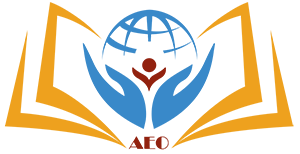
Afghanistan Economic Outlook
October 2025
Afghanistan Economic Outlook, is a creative initiative of the Afghanistan Economic and Legal Studies Organization (AELSO) which reflects most important & the latest economic events that happened during a month in Afghanistan.
By reading this economic newsletter, that has designed in three languages (Pashto, Dari & English), you can get a wider overview of Afghanistan’s economic situation.
Women drive industrial growth in Herat’s expanding economic hub
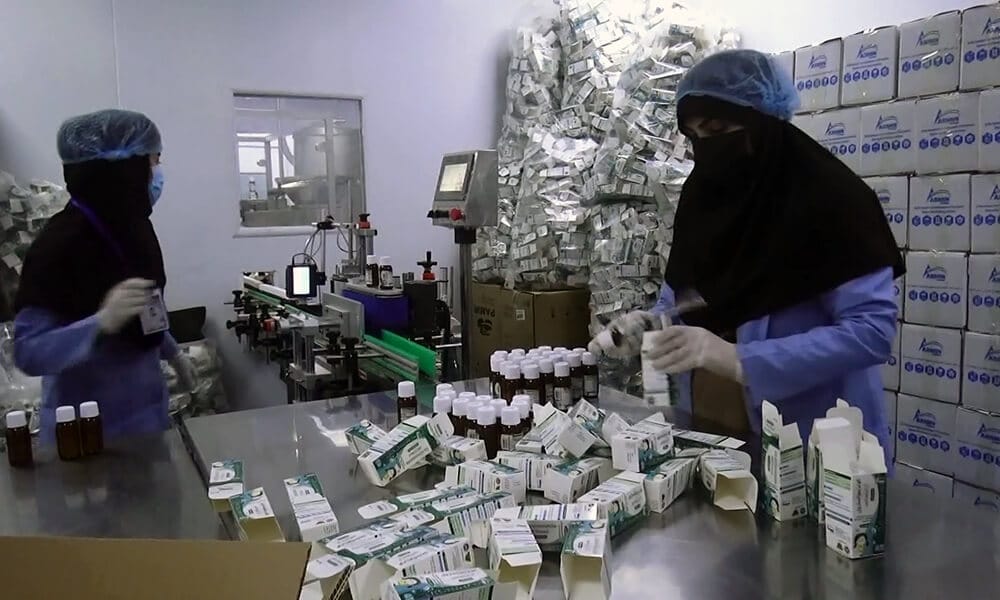 Women are emerging as a driving force behind Herat’s growing industrial sector, contributing significantly to production lines, family incomes, and the province’s overall economic expansion.
Women are emerging as a driving force behind Herat’s growing industrial sector, contributing significantly to production lines, family incomes, and the province’s overall economic expansion.
According to the Herat Chamber of Industries and Mines, more than 12,600 returnees from Iran have recently been employed in the province’s industrial city. The hiring process is ongoing as factories continue to expand their operations to meet rising market demand.
Officials say wages in the sector are also expected to increase by up to 30 percent, reflecting the growing strength and competitiveness of Herat’s manufacturing base.
Women now play a key role in this transformation. Thousands are employed in food processing, pharmaceutical, and non-alcoholic beverage factories, taking on essential positions across production, quality control, and management.
At one major food factory, women make up about 40 percent of the workforce — many of them the sole breadwinners for their families.
“Our female employees work with dedication and skill across multiple departments,” said the factory manager. “They are an essential part of our production process.”
In a local pharmaceutical plant, men and women work across multiple shifts, underscoring the growing participation of women in the province’s industrial workforce.
Overall, the Herat Chamber estimates that around 150,000 people are currently employed across the industrial city, operating in three shifts. The majority are the main income earners for their households, highlighting Herat’s role as a vital economic hub for western Afghanistan.
Direct Kabul–Amritsar flights mark new phase in Afghanistan–India trade relations
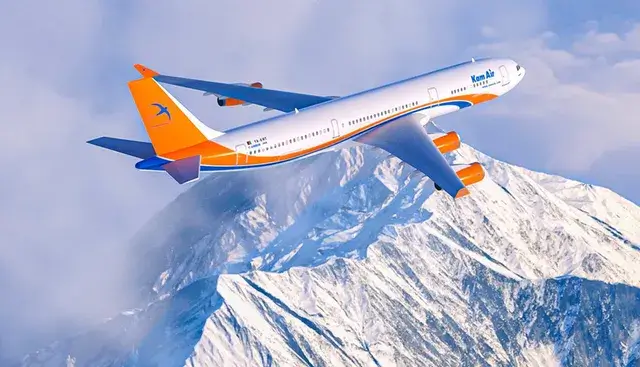 A new air corridor between Afghanistan and India is set to open soon, with the launch of direct passenger and cargo flights between Kabul and Amritsar — a move hailed as a breakthrough for bilateral trade and connectivity.
A new air corridor between Afghanistan and India is set to open soon, with the launch of direct passenger and cargo flights between Kabul and Amritsar — a move hailed as a breakthrough for bilateral trade and connectivity.
Indian lawmaker Vikramjit Singh Sahney announced the agreement, describing it as a “major development” that marks the beginning of a new chapter in economic cooperation between the two countries.
“For years, the closure of the Attari–Wagah land route by Pakistan has prevented Afghan traders from accessing Indian markets efficiently,” Sahney said. “With this new air link, Afghan goods can now reach India directly, creating significant opportunities for Afghan businesses.”
The initiative aims to ease the movement of Afghan exports such as dried fruits, saffron, carpets, and gemstones, which have long faced logistical hurdles due to regional trade restrictions.
Observers say the launch of the Kabul–Amritsar route could help revive the once-flourishing India–Afghanistan air corridor established before 2021, fostering greater regional integration and economic resilience.
Sahney added that the direct flights will not only boost trade but also enhance “mutual trust and people-to-people ties,” laying the groundwork for broader regional cooperation in South and Central Asia.
Afghan Traders Suffer 700 Million AFN Loss Amid Crossing Closures
 Following the ceasefire agreement between Afghanistan and Pakistan, the joint chamber of commerce of both countries has emphasized the urgent need to reopen trade crossings to prevent further financial damage to traders.
Following the ceasefire agreement between Afghanistan and Pakistan, the joint chamber of commerce of both countries has emphasized the urgent need to reopen trade crossings to prevent further financial damage to traders.
The chamber has announced that, due to the prolonged closure of trade routes between the two countries, Afghan traders have suffered approximately 700 million Afghanis in financial losses.
According to the chamber, as a result of the blocked routes, around 500 trucks carrying fresh fruits and vegetables intended for export to Pakistan have either partially or completely spoiled.
Khanjan Alokozai, head of the Afghanistan-Pakistan Joint Chamber of Commerce, stated: “Five hundred of our containers were either completely or partially ruined. We brought some of them back from the borders to Jalalabad and other markets, and sold them at nearly half price.”
In addition to the total halt in trade between Kabul and Islamabad, Afghan goods transit has also been suspended, and traders have been advised to refrain from shipping goods until further notice.
Meanwhile, the Afghanistan Chamber of Agriculture and Livestock, pointing to the importance of economic relations between the two countries, emphasized the need to create new avenues to expand trade and agricultural exports.
Waseem Safi, CEO of the Chamber of Agriculture and Livestock, said: “Our demand is to keep politics and trade separate, as this concerns the private sector. We expect that trade be facilitated and priority given to our products to ensure timely exports.”
Farid Azimi, a trader, also said: “Our request is that the governments of both countries prioritize trade, reach an agreement, and allow the stranded goods on both sides to be exported promptly.”
At the same time, some Pakistani media outlets, quoting Pakistan’s Revenue Authority, have reported that annually, over $766 million worth of imports from Afghanistan and over $1.54 billion in exports from Pakistan occur through the four key trade routes: Torkham, Kharlachi, Ghulam Khan, and Chaman.
However, all these crossings have remained closed for the ninth consecutive day, bringing trade between the two countries to a complete halt.
Ministry: 71 Kilometers of TAPI Pipeline Route Ready for Gas Installation
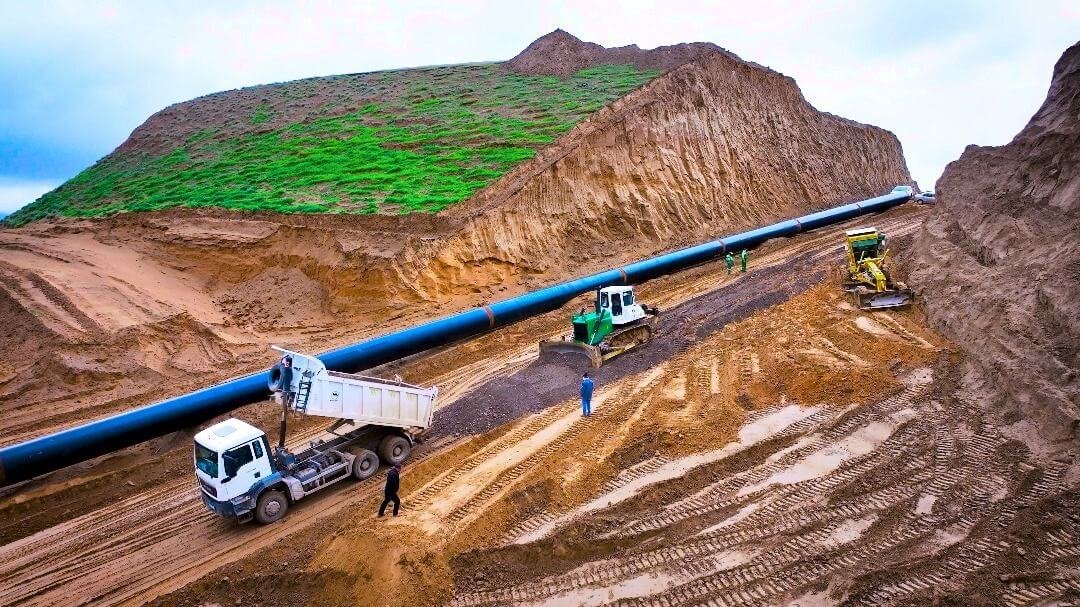 Amid hopes for economic development and regional cooperation, the Ministry of Mines and Petroleum has announced significant progress in the TAPI project.
Amid hopes for economic development and regional cooperation, the Ministry of Mines and Petroleum has announced significant progress in the TAPI project.
According to information from the ministry, so far 71 kilometers of the gas pipeline route inside Afghanistan have been prepared for installation, and approximately 100 kilometers have been surveyed and mapped. The ministry’s spokesperson also added that the implementation of the project is continuing with seriousness and speed.
Homayoun Afghan, spokesperson for the Ministry of Mines and Petroleum, said: “Sixty-eight kilometers of road have been constructed, and other pipelines will be transported to the site in the near future.”
However, some analysts describe the TAPI project as an important initiative for strengthening regional cooperation and peace, enhancing Afghanistan’s geopolitical position, creating employment, and promoting local development as well as economic and transit revenues.
Azerakhsh Hafizi, former head of the Chamber of Commerce and Investment, said: “The TAPI project is one of the major regional projects, not only for Afghanistan and its partner countries but also globally. This project will not only bring economic benefits to Afghanistan but will also elevate the country’s geo-economic, geopolitical, and strategic standing, making Afghanistan’s role in regional decision-making more prominent.”
Shams Azimi, an economic analyst, added: “The TAPI project is not merely a gas pipeline but a connecting point that links Afghanistan with the region, encompassing four countries, India, Pakistan, Afghanistan, and Turkmenistan. Along the construction route, thousands of job opportunities will be created.”
The foreign ministers of Afghanistan and Turkmenistan, during a phone conversation, reviewed political and economic relations between the two countries, assessed the implementation of the TAPI project positively, and emphasized the expansion of practical cooperation in various sectors in the near future.
Zia Ahmad Takal, head of public relations at the Ministry of Foreign Affairs, said: “In this conversation, the two ministers discussed political and economic relations between Afghanistan and Turkmenistan. They evaluated the ongoing work on the TAPI project positively and pledged to expand practical cooperation in various fields in the near future.”
The TAPI project, which transports Turkmenistan’s natural gas through Afghanistan to Pakistan and India, is considered one of the major regional and economic initiatives. After years of suspension, practical work on the project resumed on September 11, 2024, in the presence of high-ranking officials from Afghanistan and Turkmenistan.
Increase in Dried Fruit Exports Compared to Last Year
 Dried fruits such as raisins, almonds, pistachios, walnuts, and dried mulberries are among Afghanistan’s key export products and have found strong markets both regionally and globally.
Dried fruits such as raisins, almonds, pistachios, walnuts, and dried mulberries are among Afghanistan’s key export products and have found strong markets both regionally and globally.
The Ministry of Industry and Commerce has announced that the value of Afghanistan’s dried fruit exports has significantly increased this year. India, China, Pakistan, Russia, the United Arab Emirates, Canada, Italy, and the United Kingdom are among the main destinations for these exports.
According to Akhundzada Abdul Salam Jawad, the spokesperson for the Ministry of Industry and Commerce:
“In the first eight months of the current year, the value of dried fruit exports reached 222 million dollars, whereas in the first eight months of the previous year (2024), this figure was 179 million dollars.”
However, the Dried Fruit Exporters Union says that traders continue to face serious challenges in the export process.
The closure of the Torkham border crossing, high air freight costs, and problems with money transfers are major obstacles to dried fruit exports.
Union officials warn that if these issues are not resolved, there is a risk of losing key markets such as India.
Khalid Rahmani, the spokesperson for the Kabul Dried Fruit Exporters Union, said: “The main challenges we are currently facing are the lack of charter cargo flights, instability, high ticket prices, and certain administrative and technical issues.”
A trader, Mahboobullah Mohammadi, added: “The biggest challenge we have been dealing with for a long time is the banking problem. Bureaucracy within institutions is also among the key issues exporters face.”
Although Afghanistan is considered one of the major producers of dried fruits in the region, economic experts emphasize that for sustainable export growth, investments must be made in building cold storage facilities, improving packaging standards, ensuring affordable transportation, and expanding access to international markets.
Industrial Park in Herat Provides Work for 13,000 Recently Returned Afghans
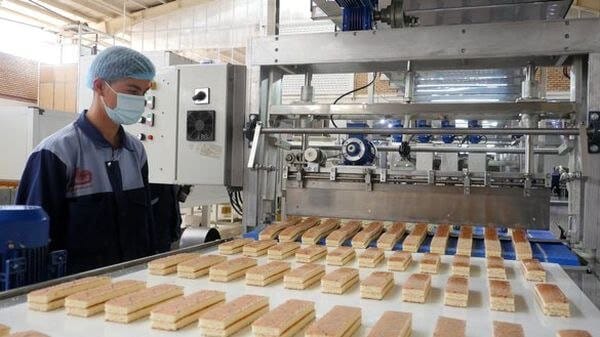 Local officials in Herat say that nearly 13,000 people who were recently deported from Iran are now employed in the province’s industrial park.
Local officials in Herat say that nearly 13,000 people who were recently deported from Iran are now employed in the province’s industrial park.
Industrialists in Herat have assured that they have increased the salaries of these newly returned workers, along with all other employees, by 30 percent.
“We have introduced 12,600 people deported from Iran to factories in the industrial park, and they are now working. Some factories had already announced job vacancies in Islam Qala; some hired 300 workers, some 200, and others 100. If we count all together, the total number of workers in the industrial park has increased significantly,” Mohammad Naser Amin, head of the Herat Chamber of Industries and Mines, said.
Herat Governor Noor Ahmad Islamjar said: “When young people are employed, it helps prevent crime, theft, drug addiction, displacement, and illegal migration.”
Some of the deportees who have recently been hired say they are happy to finally have jobs and an income in their own country after years of hardship and uncertainty abroad.
Ghulam Saeed, one of them, was deported from Iran about two months ago and now works at a cake factory in Herat’s industrial park.
He told TOLOnews: “When we were in Iran, people used to say there’s no work in Afghanistan and unemployment is high. But after coming here, I found that’s not true. Around 200 to 220 people work here, and business is going well.”
A newly established factory in Herat has also provided jobs for dozens of returnees. The factory’s management says that alongside hiring these workers, they are increasing the salaries of all employees by 30 percent.
Saad Khatibi, the factory manager, said: “We are ready to raise our workers’ salaries starting tomorrow. My suggestion to all industrialists in the country is to properly take care of their workers because current wages are not enough to meet their basic needs. Workers have rights over us, and it is our moral duty to increase their salaries by at least 30 percent so they can live more comfortably.”
The process of employing Afghans deported from Iran in Herat’s industrial park continues. According to local officials, in the past three months alone, more than 1.3 million Afghans have returned to the country through the Islam Qala border crossing.
Most of the returnees say they left all their belongings behind in Iran and came back to Afghanistan empty-handed.
Steel mill worth $22m inaugurated in Herat
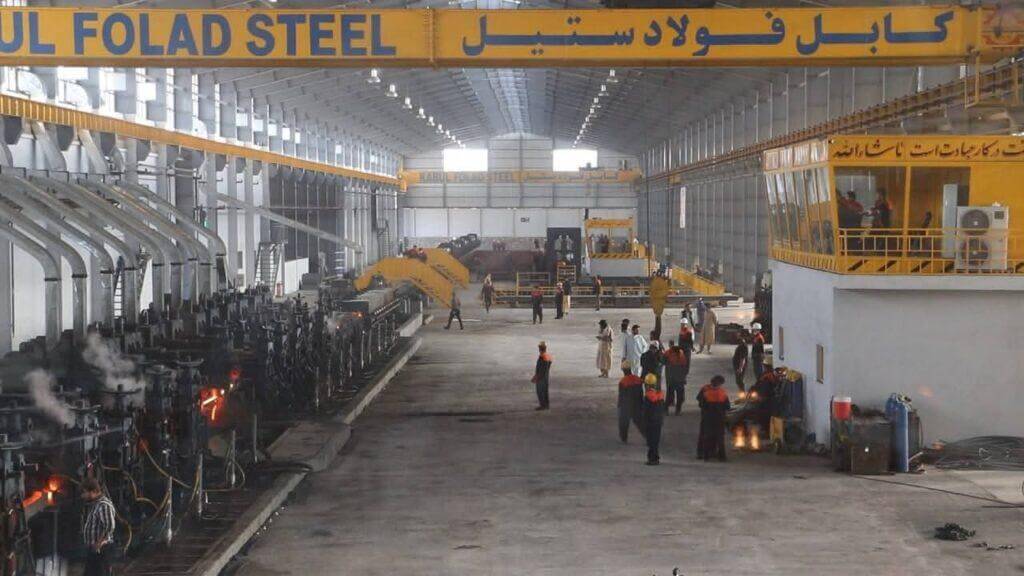 HERAT CITY (Pajhwok): The second phase of the Kabul Steel Melting Factory, established with a $22 million investment, has officially begun operations in the industrial park of western Herat province.
HERAT CITY (Pajhwok): The second phase of the Kabul Steel Melting Factory, established with a $22 million investment, has officially begun operations in the industrial park of western Herat province.
During his visit to Herat, Mullah Abdul Ghani Baradar Akhund, Deputy Prime Minister for Economic Affairs of the de facto government of Afghanistan, inaugurated the new phase of the factory, accompanied by local officials, private sector representatives and industrialists.
At the opening ceremony, Baradar stated that since the re-establishment of the IEA, practical and effective measures have been taken to expand Afghanistan’s economic relations with regional and international partners.
He added that the IEA places special emphasis on industrial growth and has launched large-scale power generation and import projects across the country.
Baradar also called on investors to invest in Afghanistan, assuring them of full cooperation and support from the de facto government.
Meanwhile, Eng. Ataullah Wardak, head of the Kabul Steel Factory, reaffirmed his commitment to further investment and development in the country and expressed gratitude for the support from both the government and the public sector.
Officials noted that the factory employs 400 people and has the capacity to process over 600 tons of steel per day.
Herat's Dried Fruit Exports Surge by 130%
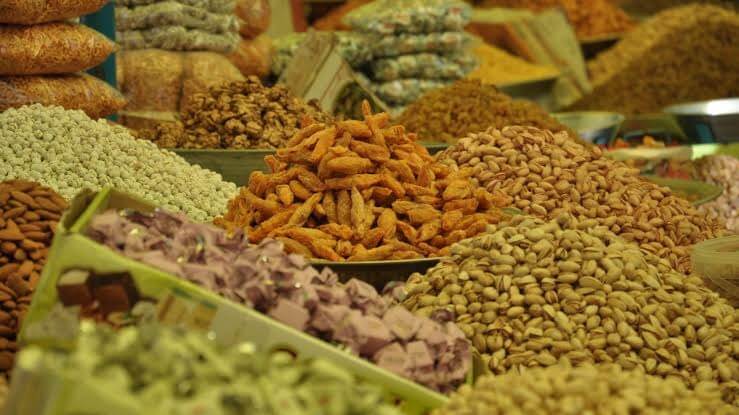 The Herat Chamber of Commerce and Investment has reported that dried fruit exports from the province have increased by over 130% this year.
The Herat Chamber of Commerce and Investment has reported that dried fruit exports from the province have increased by over 130% this year.
According to the chamber’s data, around 14,000 tons of dried fruits, worth nearly $40 million, have been exported to various countries over the past six months. In the same period last year, 8,000 tons were exported, valued at $16.5 million.
Mohammad Younus Qazizadah, head of the Herat Chamber of Commerce and Investment, said: “Global markets are favorable for us. We export to more than a dozen major countries including Iran, the United Arab Emirates, Poland, Southeast Asia, Central Asia, India, Europe, and the United States.”
Meanwhile, the Herat Chamber of Agriculture and Livestock announced that several new international markets have recently shown interest in purchasing Afghan dried fruits.
According to officials, the opening of these new markets is expected to significantly multiply the volume of dried fruit exports.
Omid Teymouri, CEO of the Herat Chamber of Agriculture and Livestock, said: “The purity of Afghan agricultural products, particularly dried fruits, has attracted global demand.”
Improved quality is cited as the main reason for the sharp rise in exports.
Mohsen Najafizadah, a trader, added: “All Afghan dried fruits are of high quality, but the quality of Herat’s dried fruits is superior compared to other provinces.”
According to figures from the Herat Directorate of Agriculture and Livestock, 15 types of dried fruits are produced in the province, most of which are exported. These include pistachios, almonds, raisins, walnuts, dried figs, pine nuts, and other varieties.
Kam Group and Saudi’s Delta International Sign MoU on TAPI Gas Project
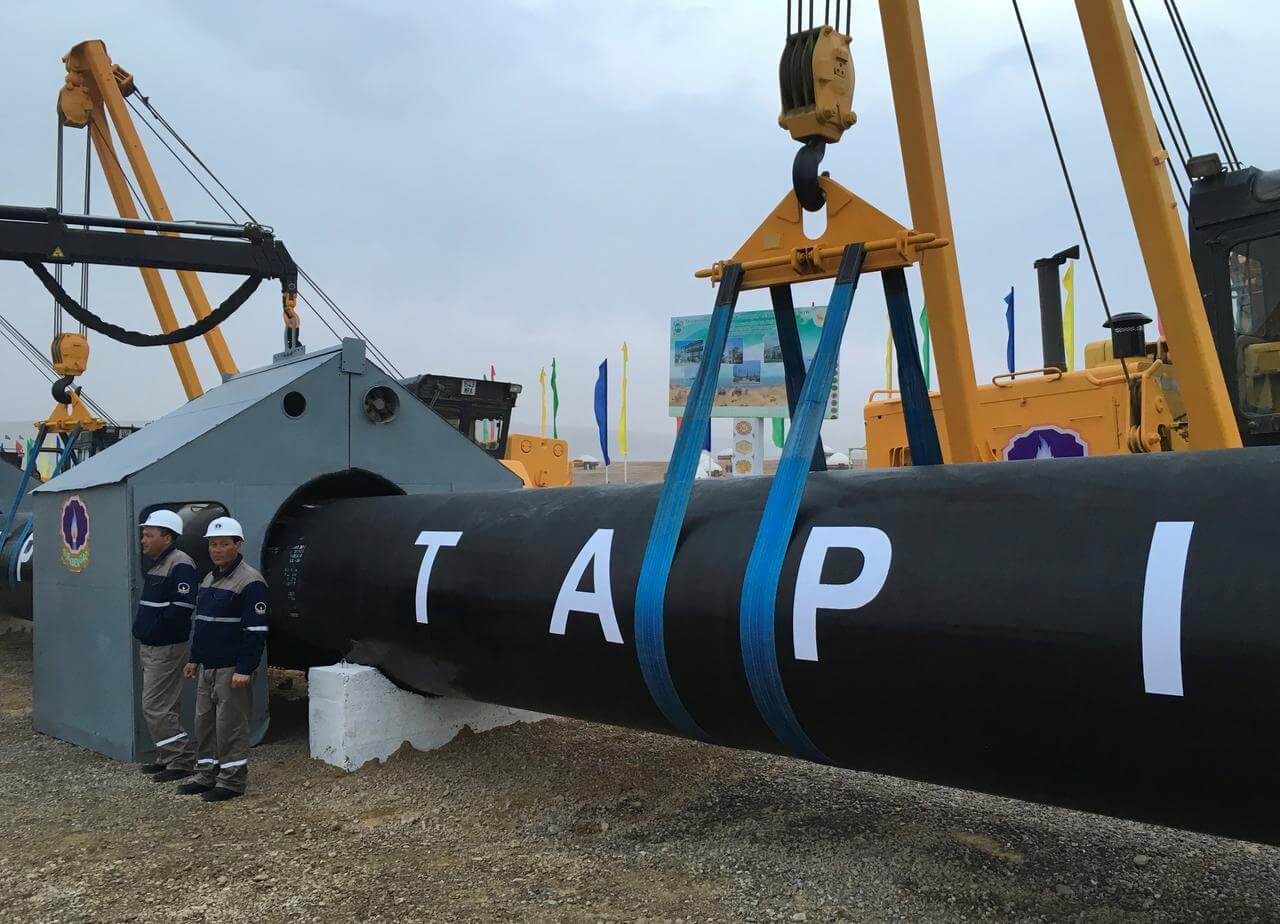 The private Afghan company Kam Group has announced that following the signing of a memorandum of understanding (MoU) in September for the generation of 2,000 megawatts of electricity, it has now signed a new agreement with Saudi Arabia’s Delta International in the gas sector.
The private Afghan company Kam Group has announced that following the signing of a memorandum of understanding (MoU) in September for the generation of 2,000 megawatts of electricity, it has now signed a new agreement with Saudi Arabia’s Delta International in the gas sector.
According to Kam Group, the MoU between Delta International and Afghanistan’s Ministry of Mines and Petroleum aims to support the implementation of the Turkmenistan–Afghanistan–Pakistan–India (TAPI) gas pipeline project, estimated to be worth $10 billion.
Mohammad Gul Khalmi, senior advisor to Kam Group, stated: “An official representative of Delta International visited Afghanistan, and jointly with Kam Energy, they have committed to investing in Afghanistan’s gas energy sector. This is one of the major projects the Afghan people have awaited for nearly twenty years. Due to budget shortages and political changes, the project had faced delays. I’m referring to the TAPI project, or the pipeline transferring Turkmen gas to South Asia.”
Meanwhile, Mullah Abdul Ghani Baradar, Deputy Prime Minister for Economic Affairs, met with the CEO of Delta International to discuss gas exploration, extraction, and extension of transmission lines. Former U.S. Special Representative for Afghanistan, Zalmay Khalilzad, was also present at the meeting.
Ahmadullah Fitrat, deputy spokesperson for the de facto government of Afghanistan, said: “The CEO of Delta International expressed interest in investing in Afghanistan’s oil and gas sector and pledged to share the company’s expertise with Afghan engineers.”
On the other hand, some economic experts say that investment in the energy sector will not only reduce Afghanistan’s dependence on imported electricity but also create new employment and development opportunities.
Mir Shakir Yaqubi, an economic analyst, stated: “To reduce dependency on imported electricity for example, from Uzbekistan, where any technical issue causes major power outages across Afghanistan we should invest in our other energy resources, such as water, solar, wind, and coal. There is high potential if these sectors are properly developed.”
Previously, Kam Group had signed a $2 billion MoU with Da Afghanistan Breshna Sherkat (DABS) to generate 2,000 megawatts of electricity from various sources including hydro, gas, wind, and geothermal, with a projected implementation period of three to seven years.
Recent Afghanistan Economic Outlook
Join to our Newsletter
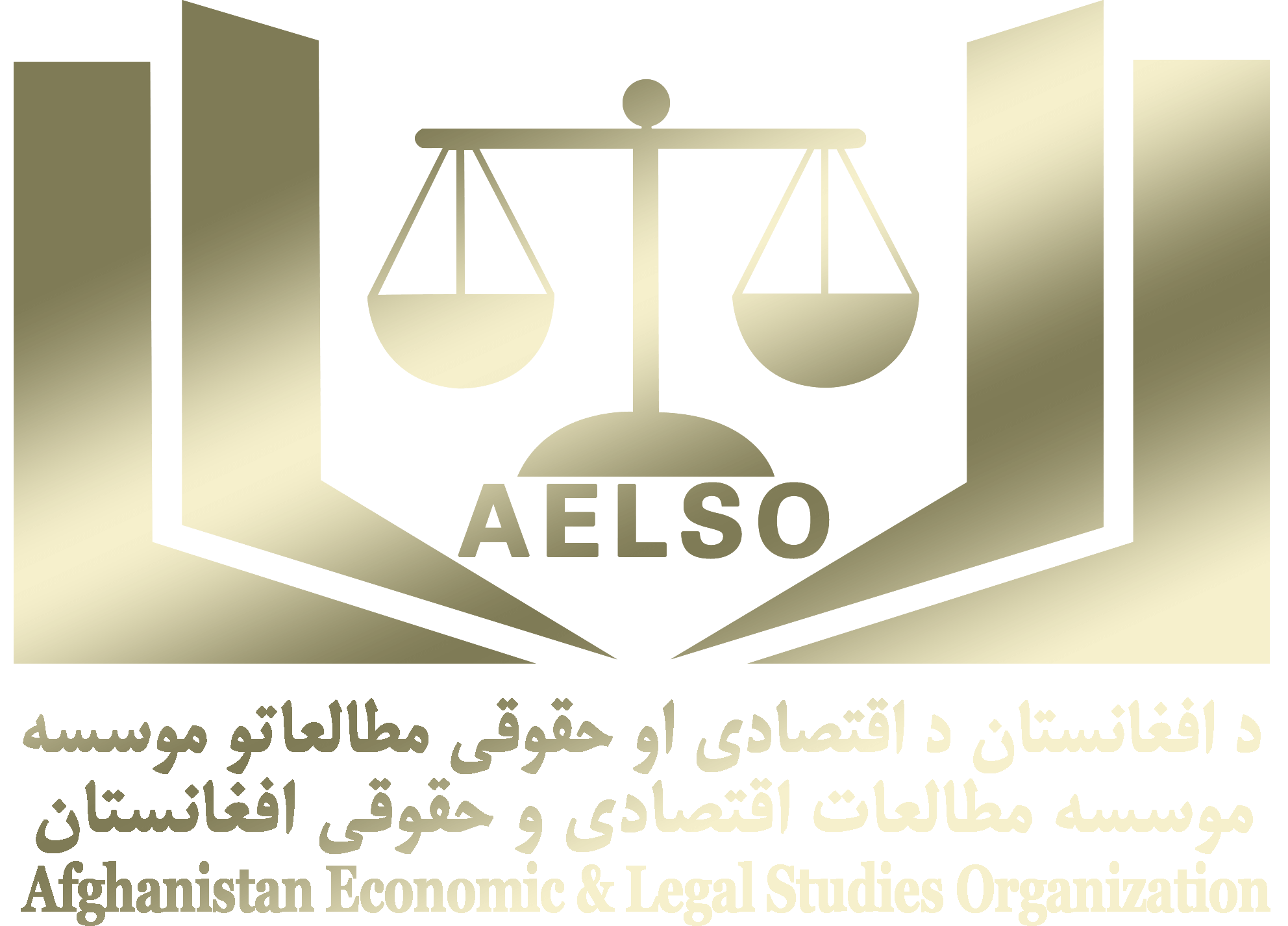
Advancing the Ideas for a Peaceful and Prosperous Afghanistan
© 2025 Copyright Afghanistan Economic & Legal Studies Organization.